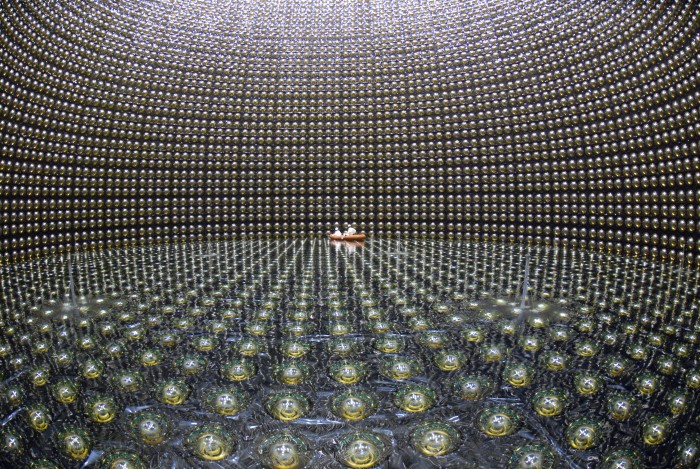Director's Corner
17 July 2008
 Barry Barish |
A personal tribute to Yoji Totsuka
High-energy physics lost a giant in our field - and I lost a very good personal friend - when Yoji Totsuka, the former Director General of KEK, died of cancer at the age of 66 last week. I would like to pay special tribute to a great scientist and wonderful human being.
Yoji Totsuka was renowned as a scientist for his ground-breaking work in neutrino physics, especially the discovery of atmospheric neutrino oscillations with the Super-Kamiokande detector. I was working on a related experiment at that time, the MACRO detector in the Grand Sasso Laboratory in Italy, where we observed possible hints of atmospheric neutrino oscillations. But it took the definitive and beautiful measurements of Yoji and his collaborators to make the discovery. Yoji went on to become Director General of KEK and won many prestigious awards for his science. This made him one of the most respected particle physicists in the world.
Yoji Totsuka's neutrino research was carried out on the Super-Kamiokande detector in Japan that followed up on the discoveries on the earlier Kamiokande detector. Super-K detected atmospheric muon and electron neutrinos that are created in the Earth's atmosphere due to high-energy cosmic rays interacting high in the atmosphere, producing secondary particles that yield muons and electrons. Simple kinematic arguments predict that the number of muon and electron neutrinos should be nearly equal. However, the measurements of Yoji and his collaborators showed that almost twice as many muon neutrinos as expected without oscillations were produced. This effect alone may have been explainable by alternatives to neutrino oscillations. However, Yoji and his team provided two additional pieces of convincing evidence: the ratio of interactions of upward vs. downward going neutrinos, and angular effects expected for neutrino oscillation having different path lengths in the atmosphere providing additional strong evidence for oscillations.
These results were first presented by Yoji Totsuka and collaborators at the International Conference on Neutrino Physics and Astrophysics in Takayama, Japan almost exactly ten years ago. The results were immediately heralded by the international community, because of the very convincing evidence that ruled out all known alternative interpretations. This discovery was a most impressive accomplishment by Totsuka and his collaborators and as a result he deservedly won many prestigious awards and prizes. It would not have surprised any of us if he had been awarded a Nobel Prize. The very obvious legacy of his discovery are all the projects that we now do in neutrino physics and plan for the future are a direct result of his work.
 Yoji Totsuka, centre rear, participating in the historic ICFA decision to base ILC design effort on superconducting rf technology. Yoji Totsuka, centre rear, participating in the historic ICFA decision to base ILC design effort on superconducting rf technology. |
As Director General of KEK, Yoji Totsuka was a very big supporter of the Global Design Effort for the ILC. He immediately accepted the decision and took steps to convert the KEK R&D programme from warm to cold technology. In a featured NewsLine article a short time later, he said "KEK is also working hard to establish and improve the SRF cavity technologies." (a statement that has proven true!). Yoji personally encouraged me to accept the job as Director of the GDE and he always went out of his way to offer his help, even after he had become ill and had stepped down as KEK DG. The last time I saw him was in Tokyo less than a year ago, when he sought me out at my hotel to learn first hand of our status and, as usual, to offer his help.
Yoji Totsuka was a very special person and a great scientist. He has made great impacts on our field and he will badly missed for his talents, wisdom and advice. As for me personally: I will always treasure having had Yoji as a colleague and a friend.
-- Barry Barish

